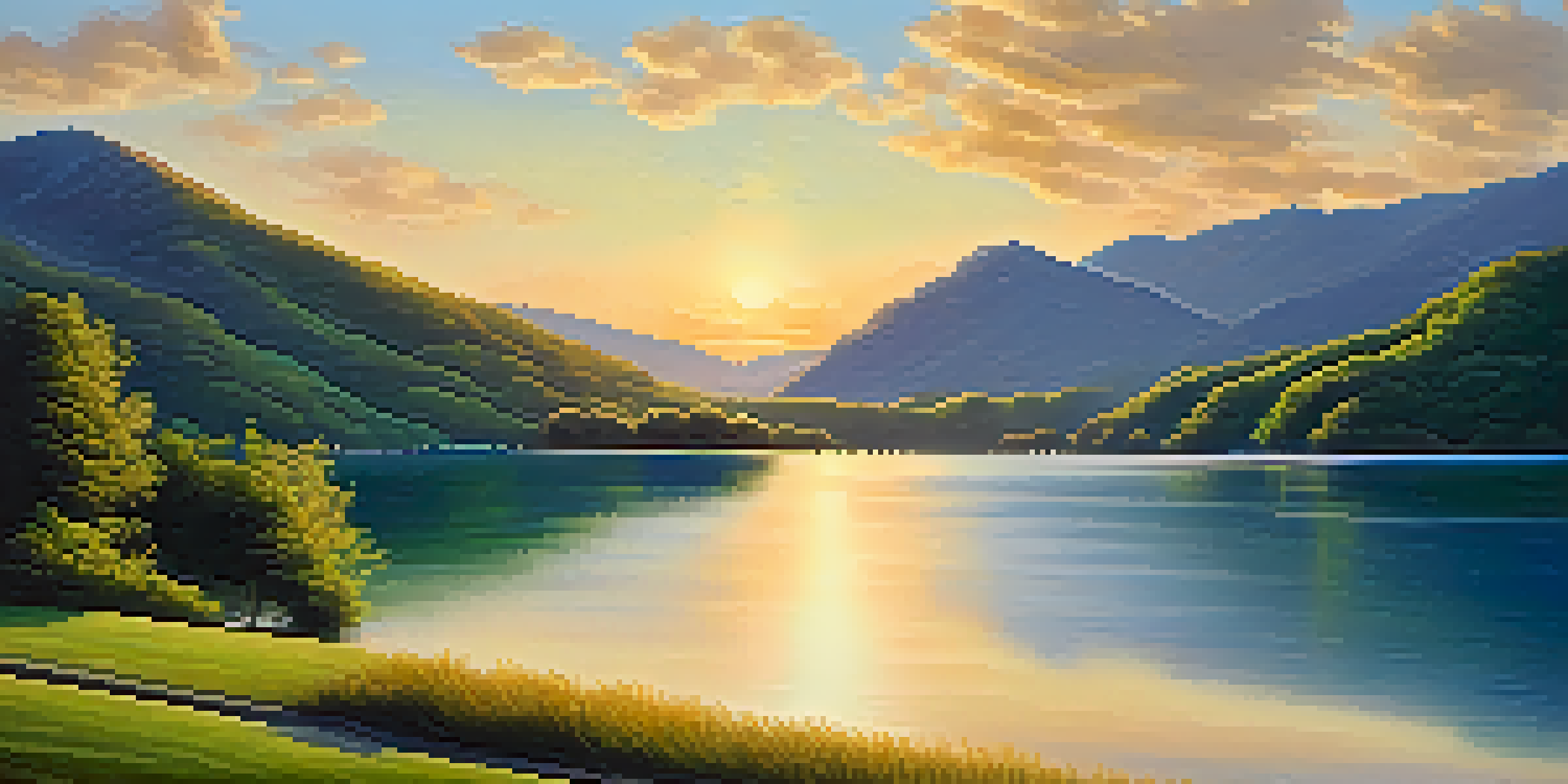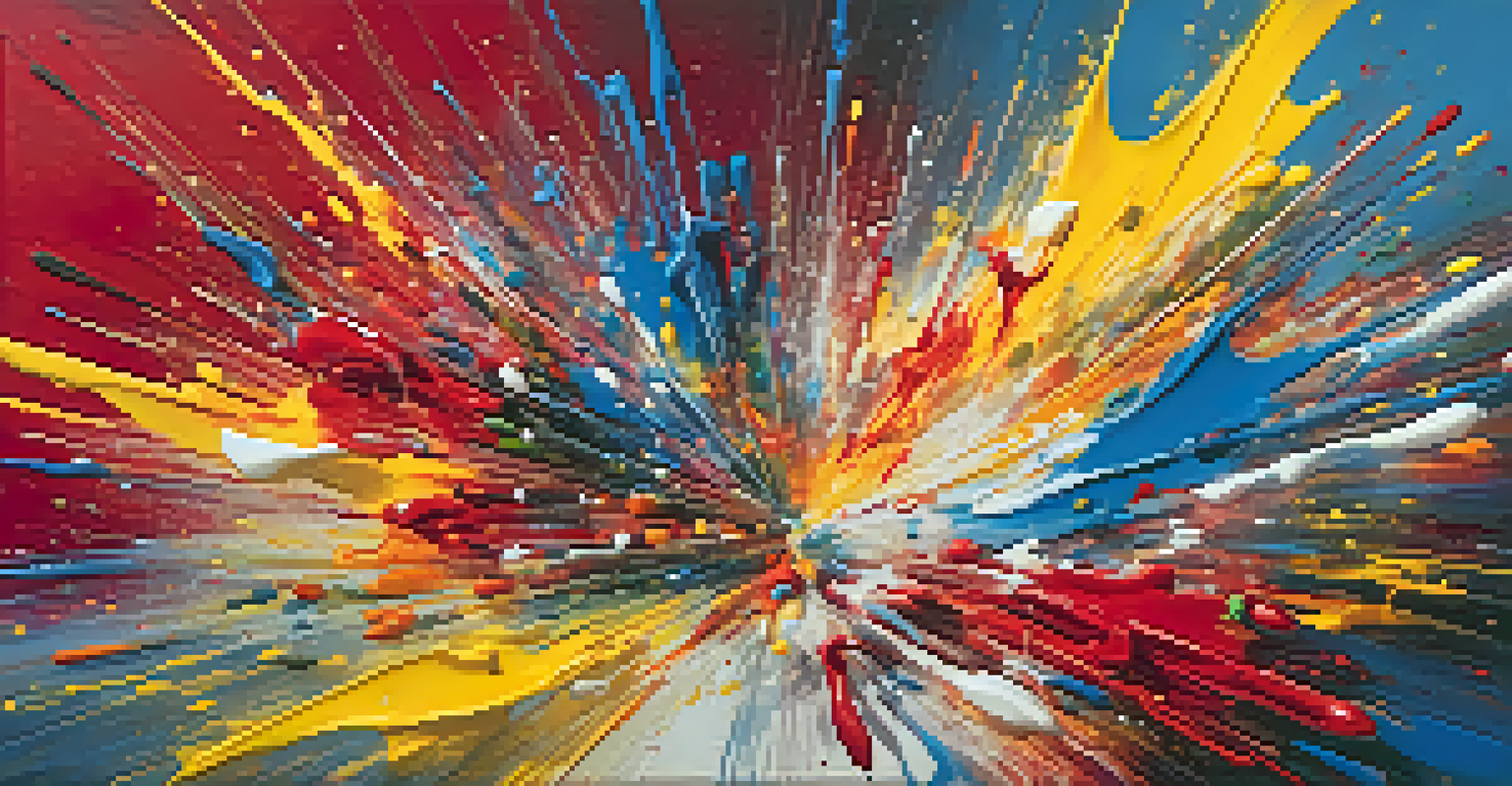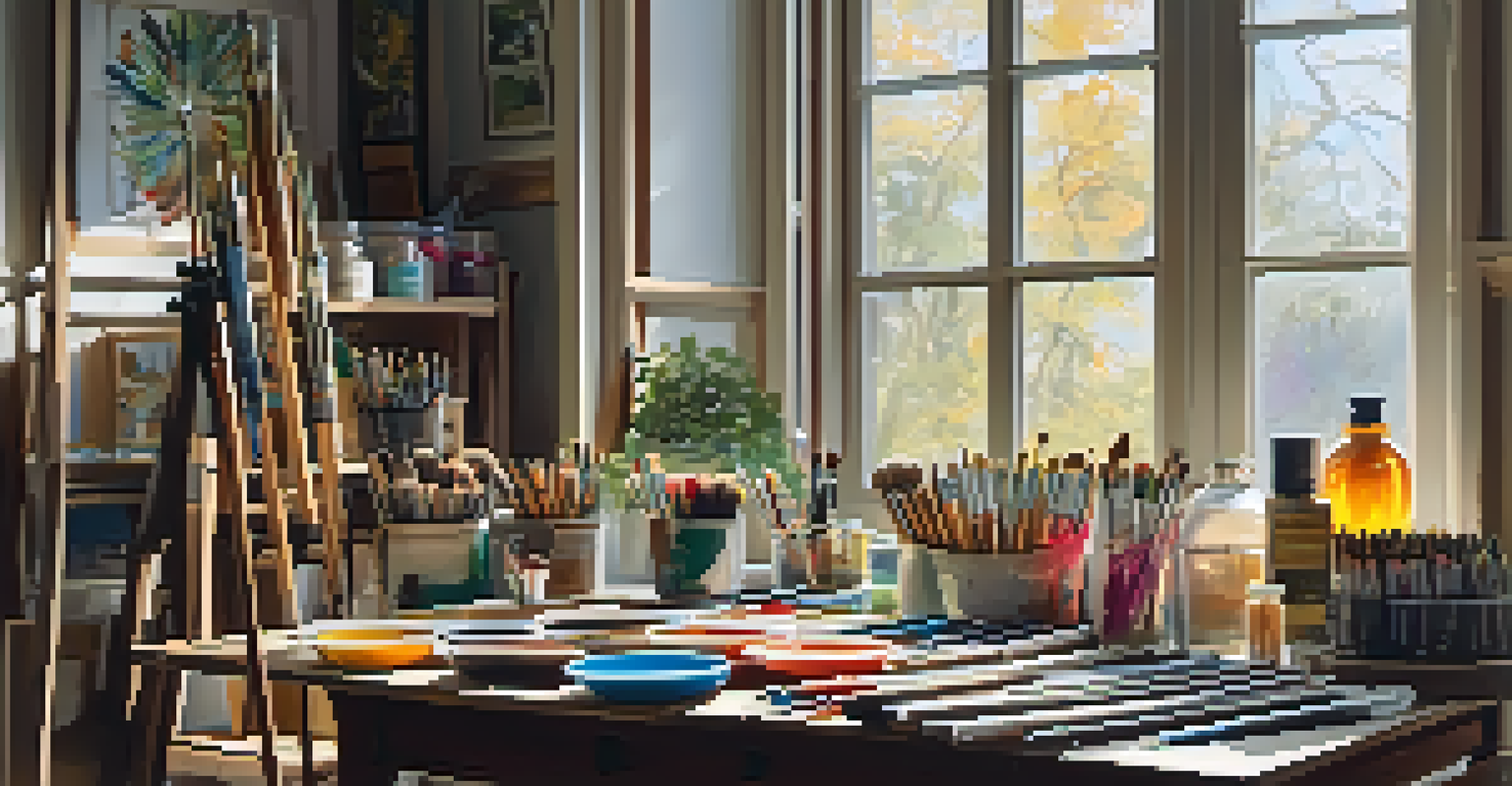AI-Generated Art: A New Era for Creative Expression in Painting

Understanding AI-Generated Art and Its Significance
AI-generated art refers to artwork created with the assistance of artificial intelligence algorithms. This technology can produce stunning visuals that mimic various artistic styles, from classic oil paintings to modern abstract pieces. It represents a significant shift in how we perceive creativity, blurring the lines between human and machine-made art.
Art is not freedom from discipline, but disciplined freedom.
One of the fascinating aspects of AI-generated art is its ability to learn from vast datasets of existing artwork. By analyzing patterns, colors, and techniques, AI can generate unique pieces that reflect the influences of countless artists. This capability opens up new avenues for creative expression and invites discussions about authorship and originality.
As we delve deeper into the world of AI art, it’s crucial to understand its implications for artists and the broader creative community. While some see AI as a tool that enhances creativity, others worry it might undermine the value of traditional artistic skills. Ultimately, this new era encourages a reevaluation of what it means to be an artist.
The Technology Behind AI-Generated Art
At the heart of AI-generated art is a field known as machine learning, where algorithms are trained to recognize patterns and create outputs based on their training. Techniques like Generative Adversarial Networks (GANs) play a pivotal role, involving two neural networks that work against each other to produce increasingly better results. This interplay mimics a sort of creative competition, leading to stunning outcomes.

Imagine teaching a child to paint by showing them thousands of pictures. AI works somewhat similarly, absorbing information from a wide range of artistic styles and techniques. As it gains experience, its ability to create original pieces improves, often surprising viewers with its sophistication.
AI Art Redefines Creativity
AI-generated art challenges traditional notions of creativity by blending human and machine contributions.
However, just like any artist, AI can face limitations. It may struggle with concepts like emotion or context, which are often crucial in traditional art forms. Understanding these strengths and weaknesses can help us appreciate the unique contributions AI can bring to the art world.
How AI Is Changing the Role of Artists
With the advent of AI-generated art, the role of artists is evolving. Many artists are now embracing AI as a collaborative tool rather than viewing it as a competitor. This partnership can lead to innovative art forms that combine human creativity with machine efficiency, resulting in pieces that neither could achieve alone.
The computer is a tool, and the artist is the one who creates. AI is just another brush in the artist's toolkit.
For instance, some artists use AI to generate initial concepts or backgrounds, which they then refine and personalize. This approach can streamline the creative process, allowing artists to focus on the nuances that make their work unique. It’s a bit like having an assistant who helps with the heavy lifting while you add the final touches.
However, this shift also prompts questions about the identity of the artist. When a machine contributes to the creation of art, who gets the credit? As artists navigate this new landscape, they are forced to redefine their role and the nature of their creativity.
The Ethical Implications of AI in Art
The rise of AI-generated art brings numerous ethical questions to the forefront. Concerns about copyright and ownership are significant, as it’s unclear who holds the rights to an artwork created by an AI. Should it be the programmer, the data source, or the machine itself? These questions challenge our traditional understanding of intellectual property.
Moreover, there’s the issue of authenticity. As AI can replicate styles and techniques, it raises the question of what it means for art to be 'original.' Many collectors and critics value the human touch in art, which AI lacks. This tension between machine-made and human-made art prompts important discussions on value and perception in the art world.
Ethics and Ownership in AI Art
The rise of AI art raises important ethical questions regarding copyright, ownership, and the value of original work.
Artists and technologists alike must engage in these conversations to establish ethical guidelines that respect both human creativity and technological advancement. Finding a balance will be crucial as we move forward in this new era of art.
AI Art and Accessibility in the Creative Sphere
One of the most exciting benefits of AI-generated art is its potential to democratize creativity. With user-friendly tools and platforms, people without formal artistic training can create visually stunning pieces. This accessibility empowers a broader range of voices and ideas in the art world, breaking down traditional barriers.
Imagine someone who has always loved art but never felt confident enough to pick up a paintbrush. With AI tools, they can experiment and create without the fear of judgment, leading to newfound confidence and expression. This shift could lead to a surge of diverse artistic styles and perspectives that enrich the creative landscape.
As more individuals engage with AI art, we may witness a flourishing of creativity that reflects a wider array of experiences and backgrounds. This inclusivity can only enhance the art community, fostering collaboration and dialogue among artists and audiences.
The Future of AI in Creative Expression
Looking ahead, the future of AI in creative expression is both thrilling and uncertain. As technology continues to advance, we can expect even more sophisticated tools that will further blur the lines between human creativity and machine-generated art. This evolution could lead to entirely new forms of art that we have yet to imagine.
However, with great potential comes great responsibility. Artists, technologists, and society at large must navigate the implications of these advancements thoughtfully. Striking a balance between embracing innovation and preserving the essence of human creativity will be key to a harmonious artistic future.
Democratizing Artistic Expression
AI tools empower individuals without formal training to create art, fostering inclusivity and diverse perspectives in the creative sphere.
Ultimately, the integration of AI in art challenges us to rethink our definitions of creativity and artistic value. The dialogue between humans and machines will shape the future of art, and we all have a role to play in this exciting evolution.
Conclusion: Embracing a New Era of Creativity
In conclusion, AI-generated art signifies a transformative moment in the realm of creative expression. While it presents challenges and ethical considerations, it also offers incredible opportunities for artists and audiences alike. Embracing this new era means acknowledging the complexities of creativity in a digital age.
As we move forward, it’s essential to remain open-minded about the possibilities that AI can bring to art. By fostering collaboration between human artists and AI, we can explore new horizons and redefine what art can be. This journey promises to be as exciting as it is unpredictable.

Ultimately, the intersection of technology and creativity invites us all to participate in a broader conversation about art’s future. Whether you’re an artist, a collector, or an enthusiast, there’s a place for you in this evolving narrative.